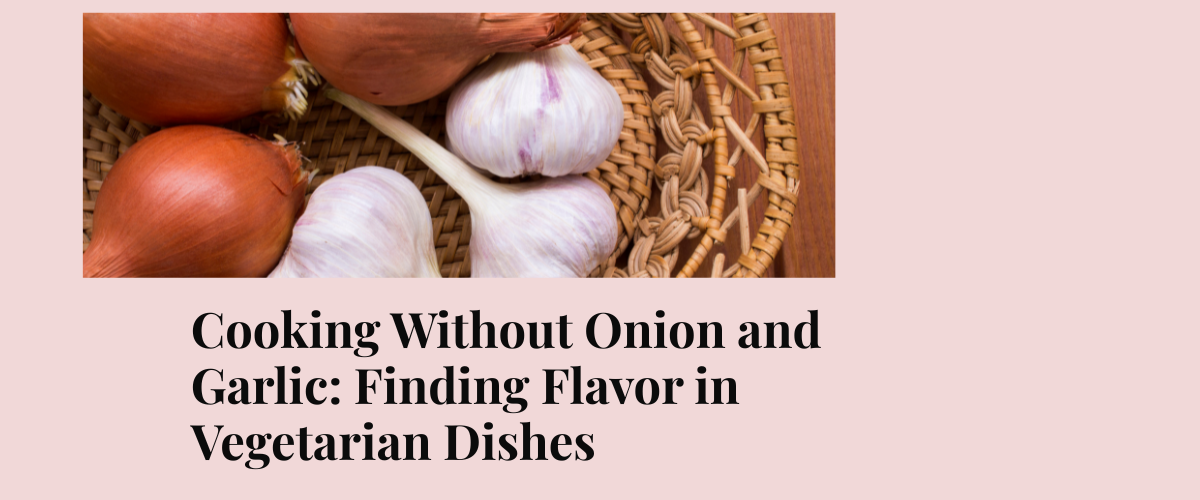Cooking Without Onion and Garlic: Finding Flavor in Vegetarian Dishes
My Family’s Journey with Food and Flavor
My kids have never liked onion or garlic.
From the time they were little, it was always a challenge to make meals that worked for everyone — dishes that were healthy, flavorful, and still felt complete without those two common ingredients.
Now, with my son’s allergies, that challenge has grown into a creative journey. Cooking has become about more than just feeding my family — it’s about finding new ways to bring flavor and love to the table, without triggering allergies or discomfort.
Adapting Our Kitchen to a New Way of Cooking
When Max developed food and product allergies, I had to rethink not only what we ate, but how I seasoned every meal.
I started experimenting with different herbs and spices — from Italian blends to Indian influences, and most especially, the beautiful, aromatic spices from Suriname, the country where my family comes from.
Our spice rack tells our story — a blend of cultures, memories, and adaptations that keep our vegetarian meals exciting and full of flavor.
Why We Cook Without Onion and Garlic
Cooking without onion and garlic doesn’t mean bland food. It means learning to balance aroma, texture, and taste with different ingredients.
For my family, it also means peace of mind — no allergic reactions, no worries, just meals we can all enjoy together.
Here’s what I’ve discovered:
- Spices are powerful. They can completely transform a dish.
- Fresh herbs add brightness that onion and garlic usually provide.
- Aromatics like lemongrass, ginger, and basil create depth and comfort without heaviness.
My Favorite Onion & Garlic-Free Spices
Here’s a look at the mix of flavors that have become staples in my vegetarian kitchen:
- Laos (Galangal): Adds a citrusy, earthy flavor — great for soups and curries.
- Kuntjur (Sand Ginger ): Brings warmth and color, perfect for rice or lentil dishes.
- Allspice: Sweet, spicy, and fragrant — amazing in roasted vegetables.
- Bay Leaves: Subtle yet deep aroma, ideal for soups and stews.
- Basil: Brings a touch of freshness to sauces, salads, and pastas.
- Five-Spice Powder: A balanced mix of sweet and savory notes — incredible for stir-fries.
- Ginger: Bright, zesty, and soothing — perfect for both savory and sweet recipes.
- Star Anise: Slightly sweet and aromatic — great for broths and teas.
- Lemongrass: Refreshing and citrusy, it adds a clean depth to curries or soups.
- Asafoetida (Hing): My secret ingredient — it mimics the aroma of onion and garlic in many Indian dishes.
Cooking Is About Adaptation
At first, it was difficult to reimagine our favorite recipes without onion or garlic.
But over time, I realized that this change opened the door to new flavors, healthier meals, and creativity in the kitchen.
Cooking without traditional aromatics has taught me that food isn’t just about following a recipe — it’s about understanding ingredients, exploring culture, and making every dish your own.
Bringing Culture to the Table
I’m proud that our meals reflect our Surinamese roots and the fusion of cultures that shaped us.
Our kitchen is filled with spices that tell stories — of home, heritage, and healing.
Every time I open a jar of lemongrass or smell freshly ground laos, I’m reminded that even with restrictions and allergies, we can still create magic in the kitchen.
From My Kitchen to Yours
If you or your loved ones are living with allergies — or just prefer cooking without onion and garlic — know that it’s completely possible to cook flavorful, satisfying meals.
With a few good spices, some creativity, and a lot of love, every dish can become a celebration of life and resilience.
Welcome to My Kitchen My Home — where every recipe is inspired by real family stories, cultural traditions, and the joy of making food that truly nourishes.




